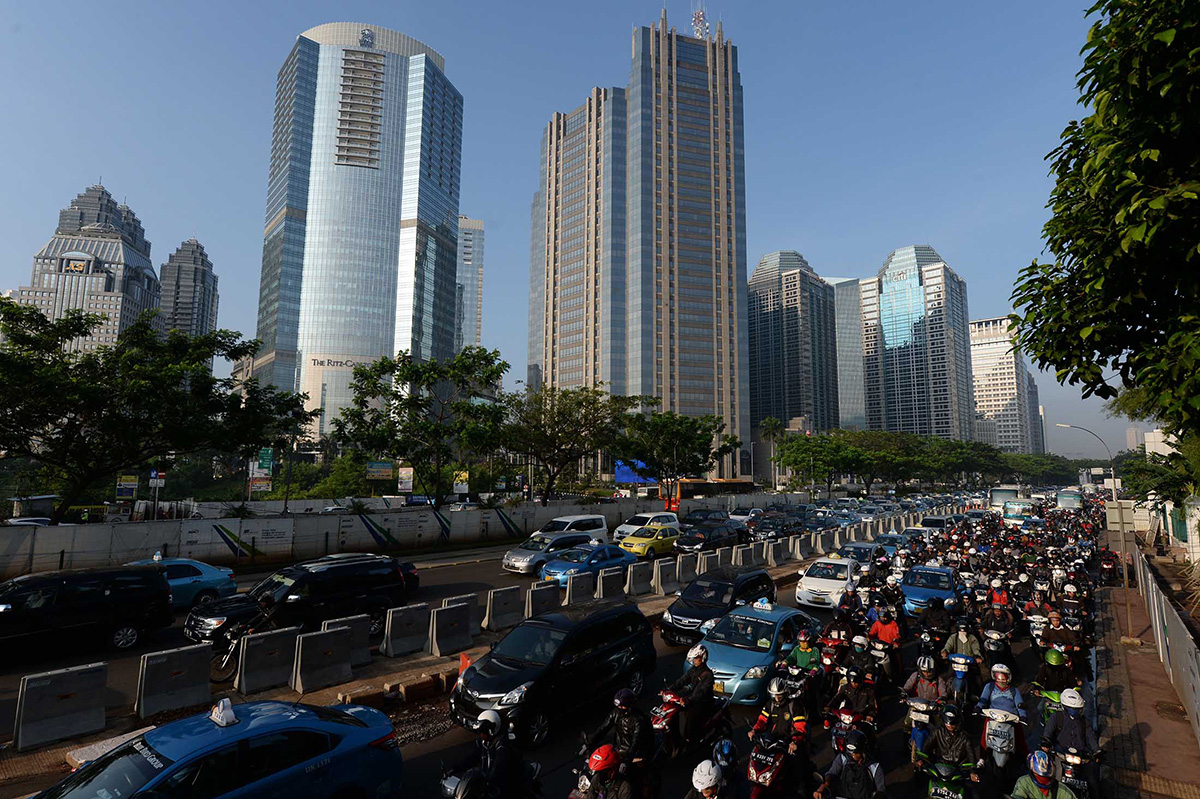When European Central Bank President Mario Draghi gives his policy update later Thursday, his words will reverberate halfway across the world in the tropical climes of Indonesia.
Where once the Federal Reserve’s policy outlook was the biggest swing factor for policy makers in Jakarta, an influx of yield hungry European investors is changing all that. They now account for the biggest share of foreign money invested in Indonesian bonds and have helped drive inflows of almost $9 billion this year – putting them on course for a record.
Indeed, even as the Fed weighs another rate hike and gets set to shrink its $4.5 trillion balance sheet, inflows have continued to swell. Bank Indonesia even felt confident enough to surprise economists with an interest-rate cut last month.
“The U.S. has always, in the global financial market, had a significant impact, but now, especially to Indonesia, the European Central Bank, I think, is equally important,” Robert Pakpahan, the director-general for budget financing and risk management at the Finance Ministry, said in an interview.
Foreign investors now hold about $58 billion, or 39 percent, of all Indonesian bonds, according to data from the Finance Ministry. Some 43 percent of the foreign-owned bonds are held by European investors, while U.S. investors own about 24 percent.
Bank Indonesia Governor Agus Martowardojo said Tuesday that he and his board were currently more concerned with the geopolitical risks arising out of North Korea’s latest nuclear tests than developments at the ECB. Agusman, a spokesman for the central bank, said on Wednesday that Indonesia’s macroeconomic profile was now much more sound compared to 2013, when the taper tantrum caused a sell-off in emerging markets, including Indonesia.
“Indonesia’s government bond yield at 6.8 percent remains attractive, despite policy changes by the ECB,” Agusman, who like many Indonesians uses one name, said via text message.
ECB Tapering
With relatively stable inflation and a current account deficit hovering around 2 percent of GDP, “perceptions of the country are still quite positive,” said Aldian Taloputra, an economist at Standard Chartered Plc in Jakarta. He said Bank Indonesia officials would be closely watching for clues on the direction of policy in Europe, and in particular any “hint of when the ECB will start tapering.”
Three Fed hikes in the space of six months have come and gone. But rather than exit, investors have already poured almost $9 billion into Indonesian bonds in 2017, putting the market on course to beat its record $10.4 billion haul from 2014.
“It’s probably a sweet spot for Indonesia bonds,” said Vivek Rajpal, a Singapore-based rates strategist at Nomura Holdings Inc. “I wouldn’t be surprised to see record inflows.”
“It’s a perfect combination of positive push and pull factors,” Rajpal said. Low inflation and macro-stability provide attractive real yields for Indonesian bonds, while global debt markets have also been stable thanks to the gradual pace of policy normalization from the Fed and ECB.
The Finance Ministry’s Pakpahan said that over the last three years the government had been “aggressively addressing infrastructure and improving significantly the quality of spending” and that there is now more confidence in Indonesia’s underlying fundamentals. The government is forecasting growth next year of 5.4 percent, which would be the fastest pace since 2013.
Foreign inflows into government bonds were also boosted after S&P Global Ratings in May raised Indonesia’s credit rating to investment grade.
“Considering this is still only early September, we believe that inflows in 2017, if everything goes well,” will hit a record, Pakpahan said. – Bloomberg
